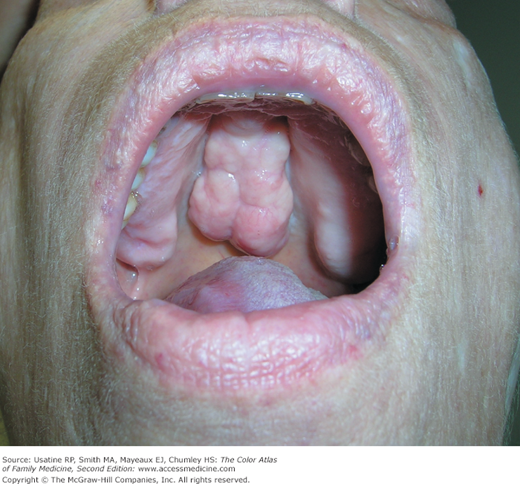Patient Story
An elderly woman is in the office for a physical examination. While looking in her mouth, a torus is seen at the midline on the hard palate (Figure 33-1). She states that she has had this for her whole adult life and it does not bother her. You explain to her that it is a torus palatinus and that nothing needs to be done. She is pleased to know the name of this lump and even happier to know that it is not harmful.
Introduction
Epidemiology
- Most common bony maxillofacial exostosis, unclear origin.
- Usually in adults older than 30 years of age.
- Prevalence ranges from 9.5% to 26.9%; among ethnic groups, the range is wider (0.9% in Vietnamese to 33.8% among African Americans).1
- More common in women than men.
- Some populations seem to be more predisposed (e.g., Middle Eastern).2
Diagnosis
- Hard lump protruding from the hard palate into the mouth covered with normal mucous membrane (Figure 33-2).
- Small size (<2 mm) appear most frequent (70% to 91%).1
- Shapes include flat, nodular, lobular, or spindle-shaped; nodular appear most common.1
Stay updated, free articles. Join our Telegram channel

Full access? Get Clinical Tree



